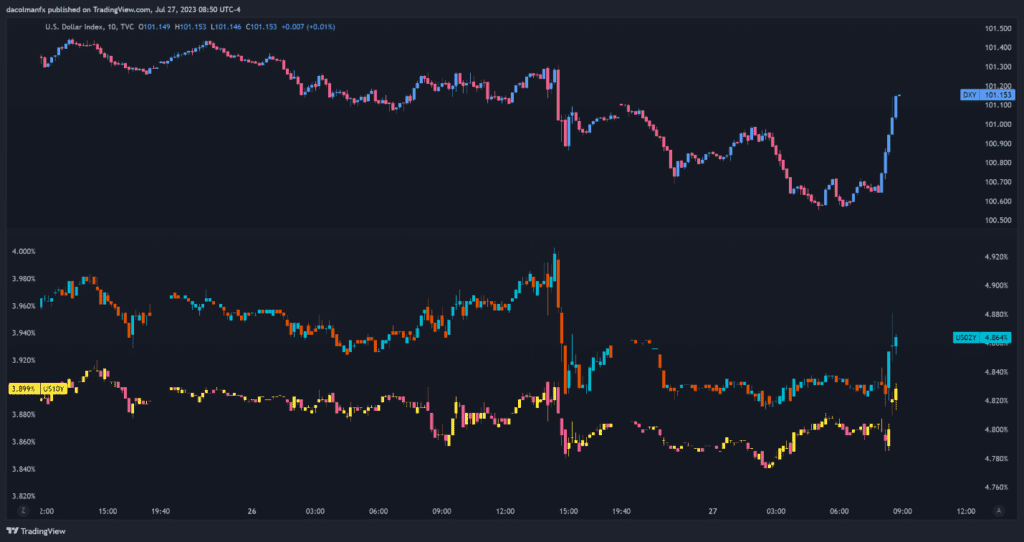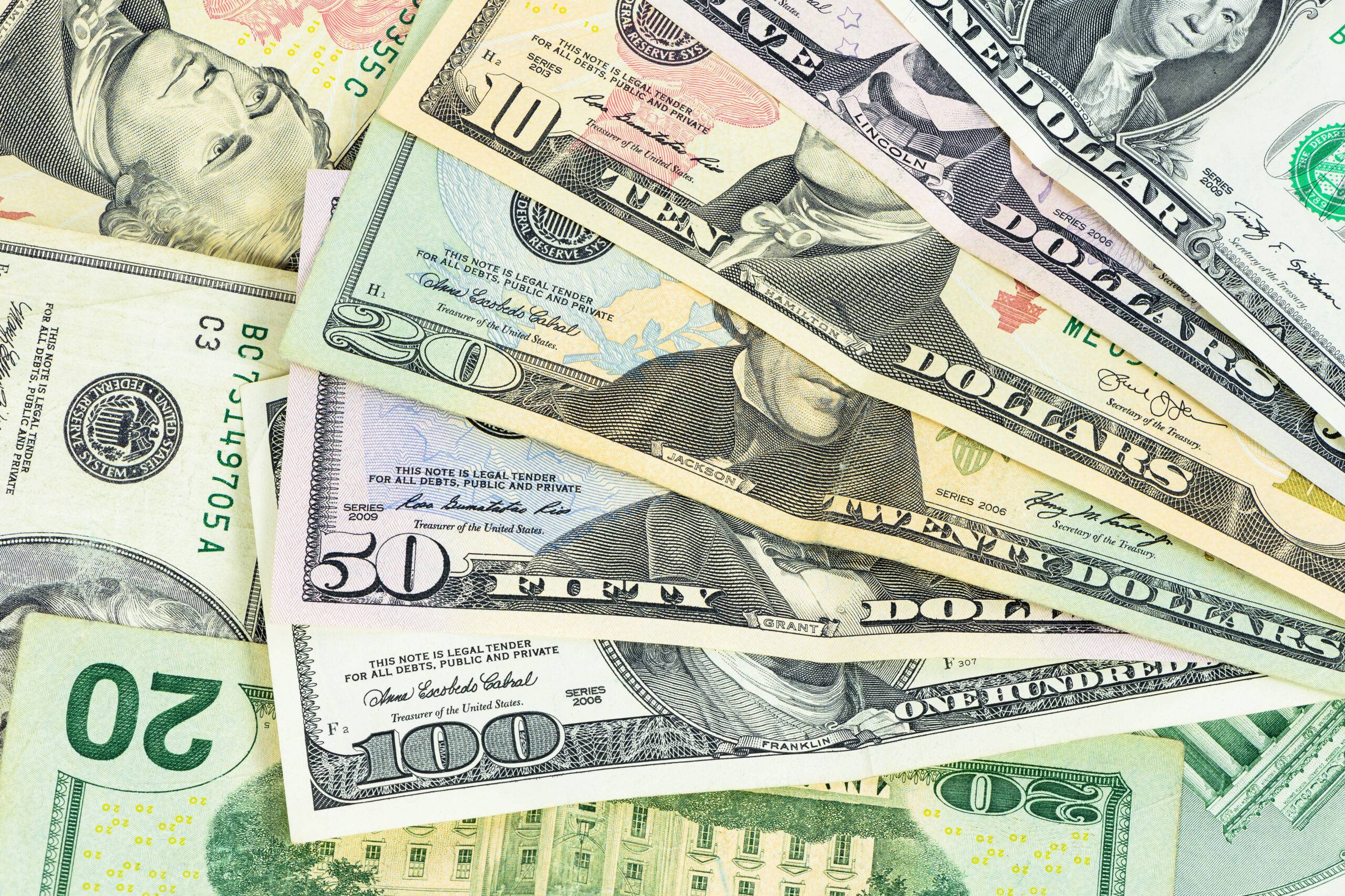The US Second-Quarter GDP Growth defied expectations with an impressive annualized rate of 2.4%, surpassing the projected 1.8%. This remarkable expansion has reverberated through financial markets, leading to increased Treasury yields and a stronger U.S. dollar. Despite concerns over inflation and the Federal Reserve’s assertive measures, the latest GDP data reflects a resilient economy, demonstrating the persistence of strong personal consumption amidst a challenging landscape. In this article, we delve into the key factors driving this surprising growth, its impact on yields and the dollar, and its significance for the nation’s economic outlook.
US Second-Quarter GDP Growth Fuels Robust Economic Outlook as Personal Consumption Remains Strong Despite Rising Yields
The U.S. Department of Commerce reported an annualized GDP growth rate of 2.4% in the second quarter, surpassing the estimated 1.8%. This substantial increase came as a relief to many investors and policymakers, as it helped alleviate exaggerated fears of an impending recession. The surge in economic activity can be attributed to various factors contributing to the overall positive sentiment.

Resilient Personal Consumption
Personal consumption expenditures, which account for approximately 70% of GDP, saw a deceleration to 1.6% in the second quarter, down from the previous quarter’s 4.0% gain. However, even with this moderation, consumption remained elevated by historical standards. The dynamic labor market played a significant role in supporting consumer spending, as households displayed an unwillingness to curtail their expenditure. This trend indicates that despite rising inflationary pressures and higher interest rates, consumers are still confident in their financial prospects, thus supporting the overall economic growth.
Capex Spending and Investment Trends
Gross private domestic capital formation rose by an impressive 5.7%, with business fixed investment jumping by 4.9%. These figures demonstrate the confidence of businesses in the economy and their willingness to invest in expansion and innovation. However, there was a slight setback in the housing market, as residential investment fell by 4.2% amid soaring mortgage rates. Despite this decline, some experts speculate that the housing market may be showing early signs of bottoming out, indicating a potential recovery in the near future.
Federal Reserve’s Inflation Fight
The recent GDP growth data comes at a time when the Federal Open Market Committee (FOMC) has been taking aggressive measures to combat surging inflation. The economy’s solid performance, coupled with strong internal demand, underscores the effectiveness of these measures in maintaining economic stability. However, as the economy continues to grow at an impressive rate, there are concerns that inflationary pressures may reaccelerate. This could lead to the FOMC adopting additional tightening measures later in the year to ensure price stickiness is contained.
Impact on Treasury Yields and the Dollar
Following the release of the GDP report, U.S. Treasury yields surged as investors reacted positively to the better-than-expected growth figures. The rise in yields signals increased confidence in the U.S. economy and indicates that investors expect higher returns from Treasury securities. As yields climbed, the U.S. dollar strengthened, benefiting from its safe-haven status and reinforcing its position in global currency markets. This boost in the dollar may have implications for international trade and exports, as a stronger dollar can make U.S. goods more expensive for foreign buyers.

Source: dailyFX
Economic Outlook and Fed’s Potential Response
The impressive second-quarter GDP growth has undoubtedly improved the nation’s economic outlook. However, it has also raised concerns about how the Federal Reserve will respond to the persistent inflationary pressures. If growth continues to outpace expectations, the Fed might find itself compelled to implement further tightening measures to control inflation effectively. This could keep Treasury yields biased to the upside and potentially impact borrowing costs for consumers and businesses.
Conclusion
The U.S. economy’s second-quarter GDP growth has exceeded expectations, indicating its resilience amid challenging economic conditions. Despite deceleration in personal consumption and challenges in the housing market, businesses’ capex spending and robust internal demand have played a crucial role in driving the economy forward. However, the Federal Reserve’s fight against inflation remains a key concern, and its response to the surging growth will be crucial in shaping the economic landscape for the months to come. As investors keep a close eye on inflation data and Fed announcements, the U.S. economy navigates through an unpredictable yet promising path.
Click here to read our latest article on India Bond Yields Steady Ahead of Key U.S. Fed Policy Decision




